Pyeongyang Naengmyeon (평양냉면)
1.8Km 2025-05-19
10, Wonhyo-ro 105beon-gil, Gyeongju-si, Gyeongsangbuk-do
141MINIHOTEL/ 141미니호텔
1.8Km 2025-08-11
141, Wonhyo-ro, Gyeongju-si, Gyeongsangbuk-do
+82-10-9031-1628
'Located in Gyeongju, the capital of Silla Kingdom for 992 years, 141 Mini Hotel lets you enjoy hotel services at motel room rates. It has sauna, book café, small conference room, and business center for the convenience of its guests. The hotel staff are friendly as well. It's very conveniently located, since it's only 5 minutes away from Gyeongju Station and 10 minutes away from the Bus Terminal, both on foot. There are many popular tourist destinations in the vicinity of the hotel, including Donggung Palace, Wolji Pond, Cheomseongdae Observatory, and Bulguksa Temple.
Solar del Pabellón Poseokjeong de Gyeongju (경주 포석정지)
2.0Km 2025-06-25
Namsansunhwan-ro 816, Gyeongju-si, Gyeongsangbuk-do
Se levanta sobre una roca cerca de un arroyo, y Poseokjeong (superficie de 7.432 ㎡) fue designado monumento privado nº 1 el 21 de enero de 1963. La ubicación es la que había tenido el palacio de la villa real de la dinastía Silla (57 a.C.-935), pero las edificaciones ya no existen más y solo queda en el lugar un trayecto de agua con una roca de forma de concha. Poseokjeong fue denominado de esta forma porque las canaletas de la roca se semejaban a las rugosas conchas de abulón. Poseokjeong está construido con 63 rocas. Tiene un ancho de 35 cm, y una profundidad media de 26 cm, y la longitud total alcanza los 10 m. Se dice que el agua del curso del valle de Namsan fue traída hasta aquí haciendo que saliese a borbotones a través de una piedra tortuga. Pero la tortuga ya ha desaparecido. Se dice que los reyes de Silla iban al lugar acompañados de sus oficiales y nobles, y que hacían flotar sus copas de vino sobre el borbotón del agua que fluía por la canaleta de piedra y antes de que su copa flotante llegara ante sí, debía recitar un poema. Junto con Poseokjeong, el Valle de Poseok era muy querido por la gente de los días de Silla por sus limpias aguas y hermosos paisajes. Por todo ello, el palacio de la villa real durante el reino de Silla fue construido aquí. Hoy en día, los árboles de zelcova, pino y bambú preservan el aire acogedor y relajante del lugar.
Huewon (경주휴원)
2.1Km 2025-06-04
154, Chunghyoseoak-gil, Gyeongju-si, Gyeongsangbuk-do
Solar del Templo Hwangnyongsa de Gyeongju (경주 황룡사지)
2.1Km 2025-03-19
Imhae-ro 64-19, Gyeongju-si, Gyeongsangbuk-do.
El solar del templo Hwangnyongsa se ubica en frente del templo Bunhwangsa en Guhang-dong, Gyeongju. Durante la era de Silla, el templo Hwangnyongsa era el más grande de su tipo con el mayor volumen de tesoros budistas del país.
La construcción del templo empezó en el año 553 en unos terrenos cerca del recinto royal de Banwolseong por orden del rey Jinheung. El rey en un principio tenía la idea de construir un palacio, pero terminó decidiendo la construcción del templo, después de recibir noticias que habían visto un dragón amarillo por los alrededores del edificio. Por este motivo fue nombrado Hwangnyongsa (templo del dragón amarillo) y fue terminado en el año 569, 17 años después de su inicio. Los murales del templo cuentan con un viejo árbol de pino dibujado por el artista Solgeo. Durante la era Silla, el templo fue el centro del budismo patrocinado por el Estado.
Más adelante, cuando el monje Jajang estudiaba en China durante la dinastía Tang, se le cruzó un dios mientras pasaba por el estanque Taihe. El dios le dijo: "El dragón amarillo es mi hijo mayor, y es el guardián del templo Hwangnyongsa por órdenes de Brahma, el Creador. Si construyes una pagoda de nueve niveles cuando regreses a Silla, los estados vecinos se someterán y pagarán tributos, y la causa real será más fuerte. Una vez se termine la construcción de la pagoda, prepara una ceremonia en memoria de los dioses locales y perdona a cualquiera de los criminales del país. Si sigues todo lo que te he dicho, ningún otro Estado se atreverá a invadir Silla".
Después de este encuentro, Jajang regresó a Silla y convenció a la reina Seondeok para que construyera la pagoda de nueve niveles. El arquitecto Abiji del estado vecino de Baekje diseñó la pagoda y el proyecto fue concretado por Yongchun y sus 200 hombres usando madera y piedra. La noche anterior a que las columnas fueran erigidas, el arquitecto Abiji soñó con la caída de Baekje y rechazó terminar el proyecto. Un viejo monje y un hombre con mucha fuerza aparecieron por sorpresa del salón principal del templo, erigieron las columnas y desaparecieron majestuosamente. Abiji estaba tan soprendido al verlo que aceptó que su país desapareciera como un destino de los dioses, y empezó de nuevo el trabajo en el templo (Samgungnyusa, Memorias de los Tres Reinos).
A 23 años de la finalización de la pagoda, la reina Seondeok, unificó los Tres Reinos; más tarde, numerosos sabios reconocieron la pagoda como un factor contribuyente en la unificación. De los tres tesoros de Silla (la estatua Jangyukjonsang, la pagoda de nueve pisos del templo de Hwangnyongsa, y el Cinturón del Rey Celestial Jinpyeong), dos se encontraban en el templo Hwangnyongsa. La campana más grande de Silla también se encontraba en Hwangnyongsa, pero fue quitada durante la invasión mongola. Los mayores monjes de Silla predicaron en el templo, y muchos reyes iban a escuchar las enseñanzas budistas.
Durante las excavaciones de julio de 1969, se encontraron enormes piedras angulares del salón del sermón, el auditorio y la pagoda. Ocho años de excavaciones y estudios arqueológicos revelan la disposición única de los terrenos del templo, que consistía en una pagoda y tres salas; también encontraron más de 40.000 objetos antiguos. Aunque los cimientos y otras estructuras de la base del templo fueron identificadas por las excavaciones, no hay indicios históricos sobre el diseño superior del templo, por lo que la restauración del templo en su totalidad es prácticamente imposible. La dimensión del templo, en base a los hallazgos arqueológicos, era de 70 hectáreas, aproximadamente 8 veces mayor que el templo Bulguksa.
Mercado Jungang de Gyeongju (경주 중앙시장)
2.1Km 2025-03-17
Geumseong-ro 295, Gyeongju-si, Gyeongsangbuk-do
Tumba del Rey Muyeol y Estela del Rey Taejong Muyeol (경주 무열왕릉, 태종무열왕릉비)
2.2Km 2025-05-23
Neungnam-gil 10-4, Gyeongju-si, Gyeongsangbuk-do
La tumba real del rey Muyeol es de Kim Chun-chu, quien subió al trono como 29º gobernante del Reino de Silla. Este rey intentó unificar los tres reinos aliando fuerzas con la dinastía Tang de China, pero falleció antes de que pudiera lograr su objetivo con éxito. Al este de la tumba, se encuentran los restos de su estela con una inscripción que dice: “Taejong Muyeol Daewangjibi (lápida del Gran Rey Muyeol)”.
Mercado Seongdong de Gyeongju (경주 성동시장)
2.3Km 2025-03-17
Wonhwa-ro 281-beongil 11, Gyeongju-si, Gyeongsangbuk-do
El Mercado Seongdong, situado en la ciudad de Gyeongju, provincia de Gyeongsangbuk-do, abrió en 1971 y está formado por unas 300 tiendas y 30 puestos callejeros aproximadamente.
Templo Bunhwangsa (분황사)
2.5Km 2021-01-21
Bunhwang-ro 94-11, Gyeongju-si, Gyeongsangbuk-do.
+82-54-742-9922
El templo Bunhwangsa fue construido durante en el año 634, durante el tercer año de reinado de la Reina Seondeok, 27ª monarca de la Dinastía Silla. Los prominentes monjes budistas Wonhyo y Jajang residieron en este templo.
Al tener una larga historia, este templo albergaba muchas reliquias históricas, pero la mayoría se han perdido debido a las invasiones mongolas y japonesas. Se conservan la Torre de Piedra Mojeon, Hwajaengguksabibu (piedra memorial de Wonhyo, renombrado monje budista de la dinastía Silla), Samnyongbyeoneojeong (manantial en el que según una leyenda residían los tres dragones que protegían el Reino de Silla), y los pilares Danggan.
La Torre de Piedra Mojeon, registrada como Tesoro Nacional N° 30, alcanza una altura de 9,3 metros, y fue construida usando bloques de andesita. Aunque se piensa que la torre tenía 7 o 9 niveles, hoy en día se conservan tan solo 3. Los pilares Danggan, dos pilares de piedra de 3,6 metros de altura, están situados en la entrada del templo. Danggan se refiere a los mástiles hechos de madera, metal o piedra, que se usaban para colgar las banderas que indicaban los festivales budistas para que se enterasen incluso las personas que vivían lejos. Los pilares están soportados por tortugas de piedra, una característica poco común. También hay estatuas de Buda que se exponen en el Museo Nacional de Gyeongju y que fueron encontradas en un pozo situado 30 metros al norte del muro posterior del templo Bunhwangsa.
Tumba de la Reina Seondeok en Gyeongju (경주 선덕여왕릉)
2.6Km 2022-08-03
Bomun-dong, Gyeongju-si, Gyeongsangbuk-do.
Esta tumba se encuentra situada en la ciudad de Gyeongju, y corresponde a la 27ª mandataria del reino de Silla (57 a.C.-935 d.C), la reina Seondeok (período de reinado: 632-647). Fue hija del rey Jinpyeong, quien no tuvo un heredero varón, por lo que logró ser la primera mujer en ocupar el trono en la historia de Silla. Durante sus 14 años de reinado, se construyeron el templo Bunhwangsa y el observatorio Cheomseongdae, también ordenó la construcción de la famosa pagoda de madera de 9 pisos del templo Hwangnyongsa, un logro de la arquitectura budista. Además, tuvo bajo su autoridad a Kim Chunchu, quien en el futuro se convirtió en el rey Muyeol, y al general Kim Yu-sin, ambos personajes cruciales para la Unificación de los Tres Reinos, es decir, ella sentó las bases para que dicho acontecimiento pudiese tener éxito. Pero lamentablemente, por ser una mujer inquietó a la autoridad real, y así surgió la rebelión. Por desgracia, falleció en su transcurso en el año 647, 23 años antes de que se realizara la unificación. La tumba es circular, con un contorno de 73 m, y posee 2 capas de piedras naturales por debajo del túmulo para su protección; sin otros detalles en especial, en comparación con otras tumbas reales, presenta un tamaño de menores dimensiones. En sus cercanías se encuentran otros lugares históricos de importancia.
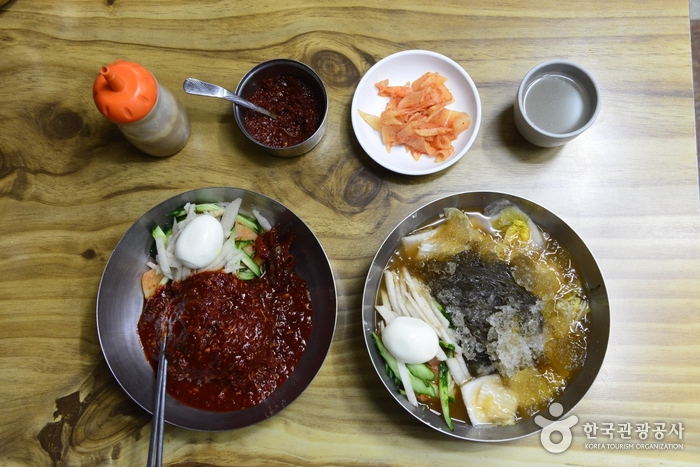
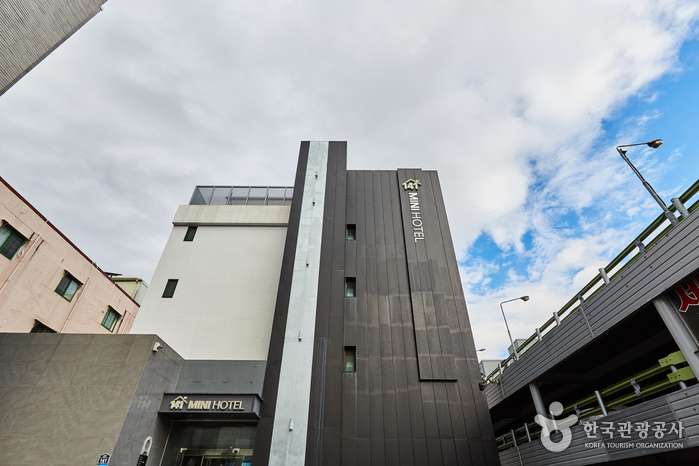
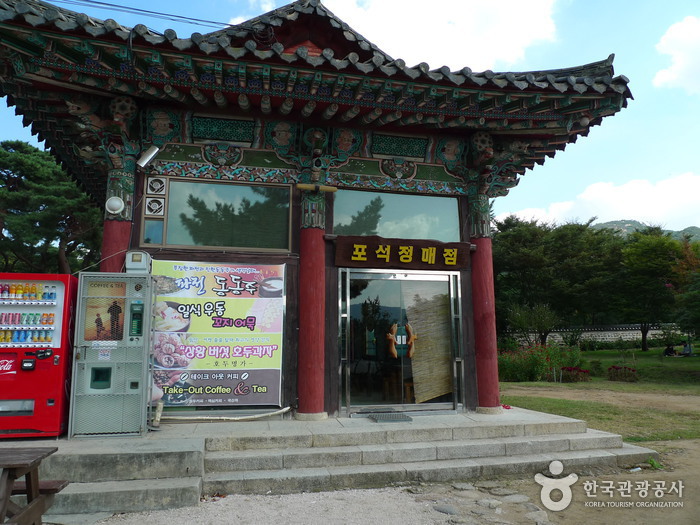
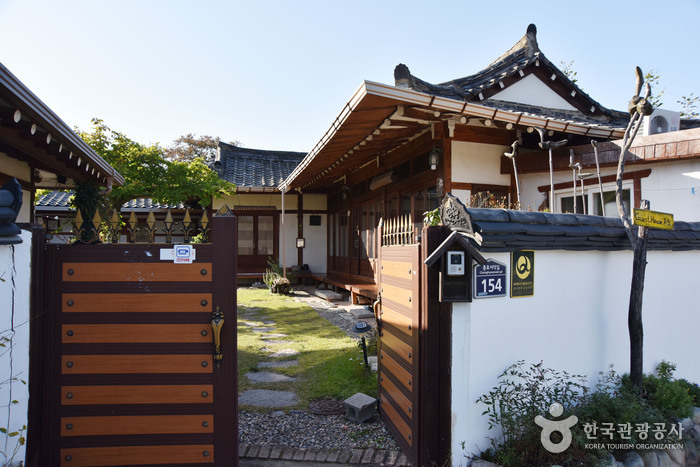
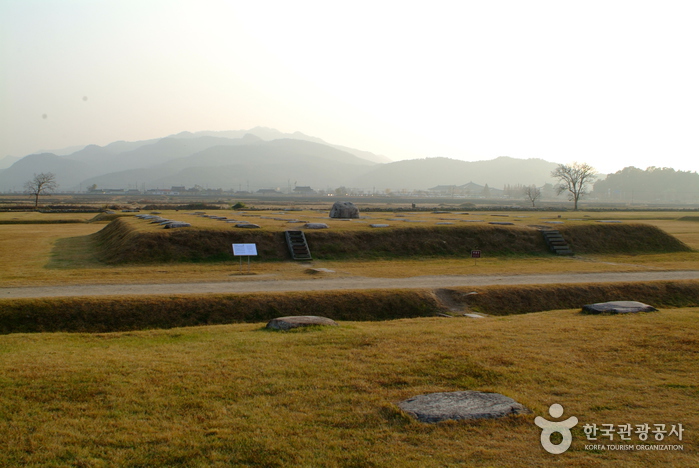
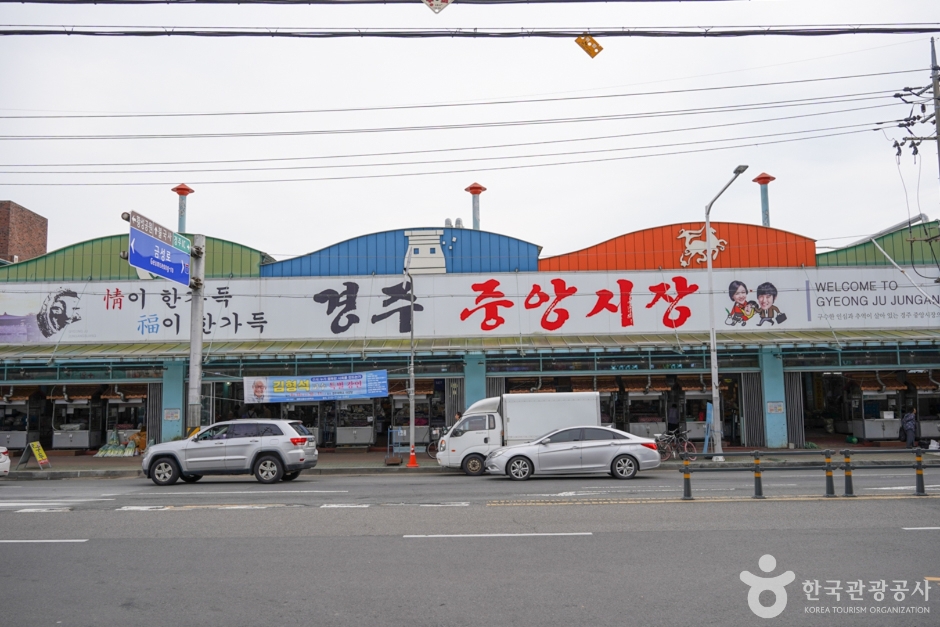
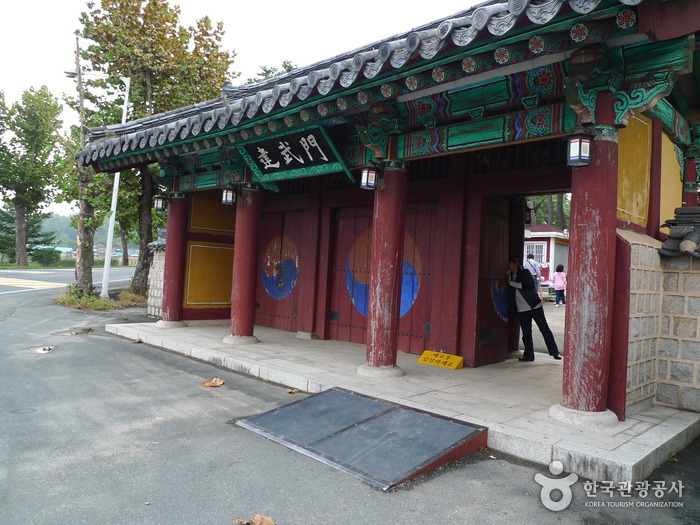
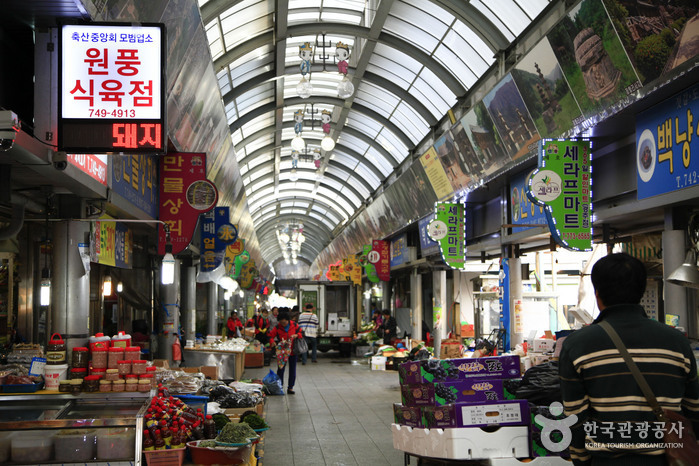
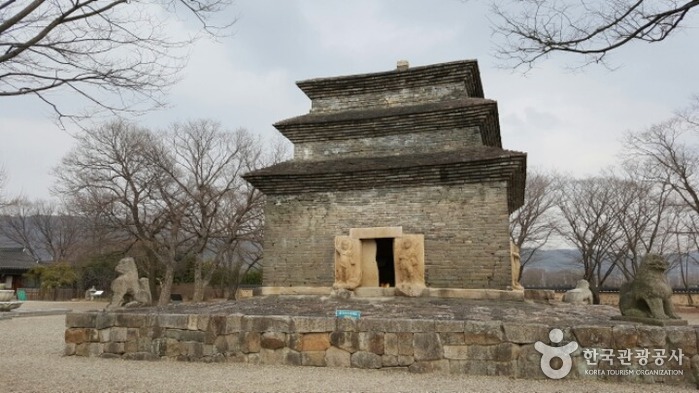
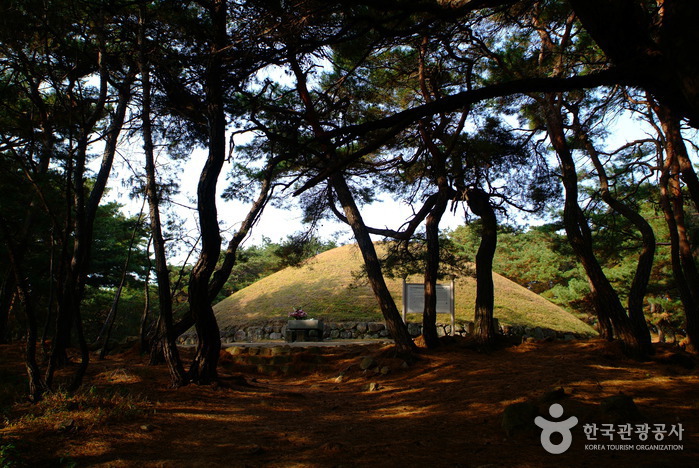
 Español
Español
 한국어
한국어 English
English 日本語
日本語 中文(简体)
中文(简体) Deutsch
Deutsch Français
Français Русский
Русский